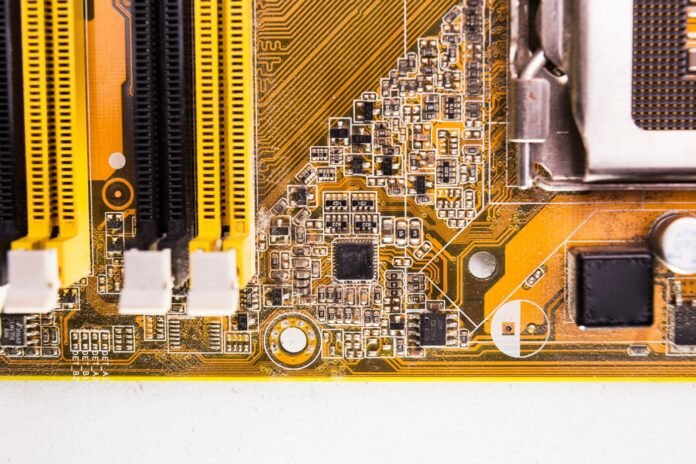Introduction: Merging Retro Gaming and Ambient Lighting
Emulation has breathed new life into retro gaming, allowing players to enjoy classic titles on modern hardware. One of the most popular emulators for PSP games is PPSSPP pico wiring hyperhdr which brings high-quality rendering and performance improvements. Alongside this retro revival, there’s a rising trend in immersive visual setups using technologies like HyperHDR, a fork of Hyperion optimized for HDR video sources. By wiring a Raspberry Pi Pico with addressable LEDs and syncing it with HyperHDR, you can create a full ambient lighting experience that reacts to your gaming screen in real time. This article walks through the concept and the practical steps of wiring the Pico to work with HyperHDR, and how that setup can amplify your experience when playing PPSSPP games.
Understanding the Role of PPSSPP in the Setup
PPSSPP pico wiring hyperhdr is a highly optimized PSP emulator capable of running on a wide variety of hardware, including PCs, Android devices, and even low-powered single-board computers. While the emulator itself doesn’t directly support ambient lighting effects, the video output from games can be analyzed by external software like HyperHDR to produce real-time light effects. For this to work efficiently, your gaming setup must be capable of screen capturing or mirroring the display output so that HyperHDR can extract color information. PPSSPP games, with their vibrant and dynamic visuals, are perfect candidates for such ambient lighting, making every explosion, sunset, or character movement feel larger than life when paired with a responsive LED array.
Why Use a Raspberry Pi Pico for LED Control
The Raspberry Pi Pico is an affordable microcontroller with plenty of GPIO pins and strong timing capabilities, making it ideal for controlling addressable LEDs such as WS2812b or SK6812 strips. Unlike a full Raspberry Pi, the Pico doesn’t run a traditional operating system, which actually works in its favor for timing-sensitive tasks like LED control. With proper firmware (such as WLED forks or custom code uploaded via MicroPython or C++), the Pico can become the LED controller for your HyperHDR setup. It’s connected to your host system (which runs HyperHDR) via USB and receives color data that it instantly translates into lighting effects. This is the core wiring function that links your gaming display to your physical lighting.
Wiring the Pico: Connecting to Your LEDs
Wiring the Raspberry Pi Pico for use with addressable LEDs is fairly straightforward but must be done with attention to detail. First, connect the data pin of the LED strip to a digital GPIO pin on the Pico—GPIO 0 or 1 are often used. Next, connect the GND from the LED strip to one of the Pico’s ground pins to ensure a common ground. Finally, power the LED strip with an appropriate external 5V source—never directly from the Pico’s 5V pin, as the current demand could easily exceed what the microcontroller can provide. A level shifter may be required if your LED strip is not 3.3V logic tolerant. Once wired, you flash the Pico with LED control firmware that can interpret USB serial data from HyperHDR. This setup turns your Pico into a responsive, low-latency lighting bridge.
Installing and Configuring HyperHDR for Live Lighting
HyperHDR builds on the legacy of Hyperion by adding support for HDR tone mapping and color accuracy, making it better suited for modern displays and content. To get started, install HyperHDR on a host device—this can be a PC or a dedicated Raspberry Pi. You’ll need to configure a USB capture device if you’re using a console or external source, or use screen capture if you’re gaming on a PC. Once installed, you configure the LED layout in the HyperHDR UI, set the LED controller type to match the Pico’s firmware protocol (often Adalight or WLED-compatible), and define the number of LEDs. The software then continuously sends color information to the Pico over USB, translating your game visuals into a surrounding glow that changes dynamically as you play.
Syncing PPSSPP Gameplay with HyperHDR
With your lighting system active, you now connect it all to the PPSSPP gaming experience. If you’re gaming on the same device running HyperHDR, screen capture is the most efficient way to feed visuals to the lighting system. The visual environment of PSP games—such as the lush backgrounds in “God of War: Chains of Olympus” or the colorful chaos in “Patapon”—translates beautifully into ambient lighting. For players using full-screen mode, HyperHDR can accurately detect the dominant screen colors and update the LED strip with minimal delay. This setup transforms your space, syncing every movement, flash, and scene change with an instant ambient response that boosts immersion dramatically.
Troubleshooting Common Issues in Wiring and Sync
While the idea is straightforward, real-world wiring can present challenges. If your LEDs don’t light up, double-check your power source and make sure your data wire is connected to the correct GPIO pin. Inconsistent colors or flickering often point to timing issues or noise in the data line, which can sometimes be resolved by shortening the data wire or adding a small capacitor near the LED power input. In HyperHDR, verify that the correct LED protocol and port are selected, and make sure your Pico is recognized as a serial device. Logging and debugging tools within HyperHDR are invaluable for narrowing down software-side issues.
Conclusion: A Simple DIY for Maximum Immersion
Combining PPSSPP with a Raspberry Pi Pico-powered HyperHDR setup is a perfect DIY project for gamers who love both retro emulation and immersive visuals. It’s cost-effective, relatively easy to wire, and highly customizable. You don’t need to spend hundreds on commercial ambient lighting kits when a Pico and some addressable LEDs can do the job just as well—with the added satisfaction of building it yourself. Whether you’re diving into classic PSP adventures or showcasing your gaming space, this project enhances your setup in a unique and visually stunning way.


